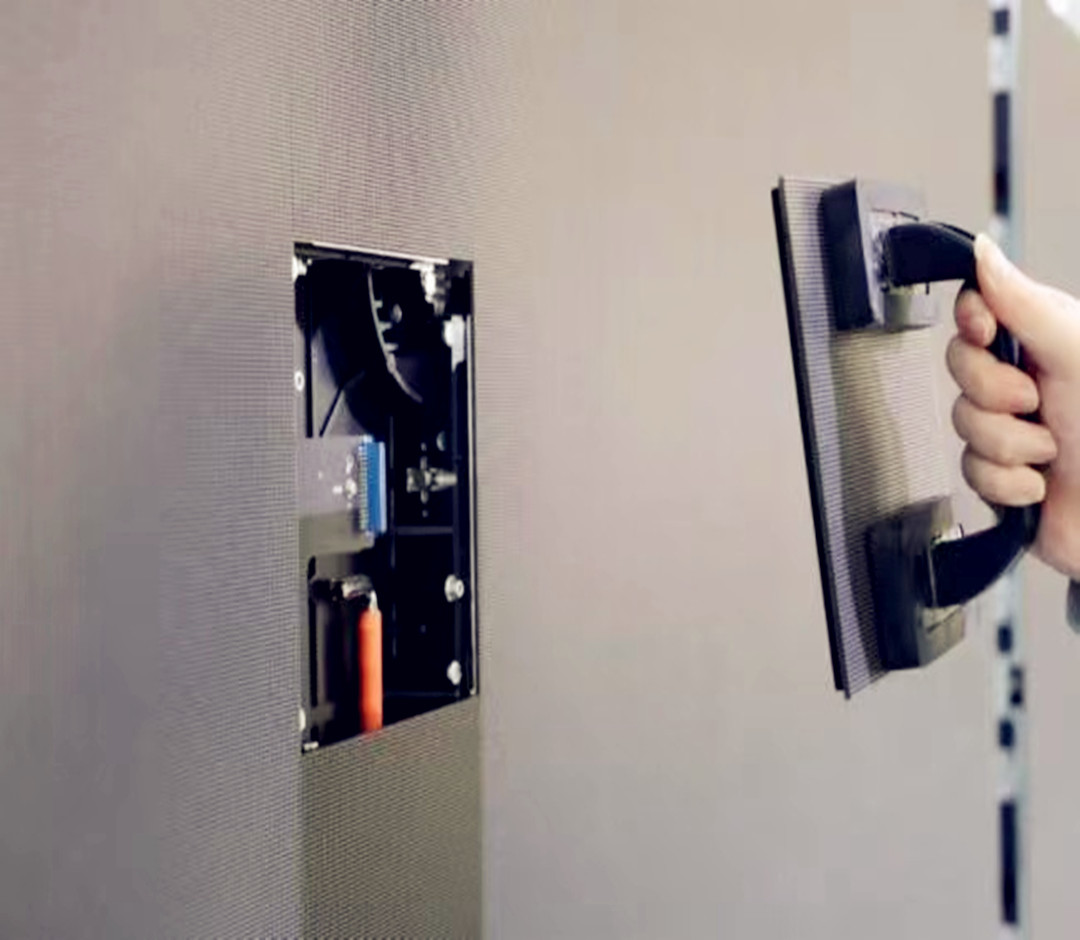Speaking of maintenance, the maintenance methods of LED display are mainly divided into front maintenance and back maintenance. So,what is the difference between these two maintenance methods?
Front maintenance: The biggest feature of front maintenance is to save space. For indoor or inlaid installation structures, the space is extremely expensive, so too many places will not be left as maintenance channels. Therefore, the front maintenance can greatly reduce the overall thickness of the LED display screen structure, which can not only integrate well with the surrounding building environment, but also save space while ensuring the effect. However, this structure has very high requirements on the heat dissipation function of the device. The front-maintenance display screen is thin, does not occupy space, saves materials, is light in weight, and is easy to install. It is suitable for installing indoor screens and can be directly hung on the wall for easy maintenance. Post-maintenance is generally used for outdoor screens, because outdoor screens cannot be disassembled from the front due to waterproof considerations, and the cost of the outer frame is higher. With the increasing popularity of small-pitch LED screens, front maintenance has gradually become the mainstream of indoor display screens. The so-called front maintenance usually refers to the use of magnetic adsorption to fix the LED display cabinets. When maintenance is needed, the suction cups are used to remove the cabinets that need maintenance from the front. This method can not only make the screen lighter and thinner, save space, and it is also very convenient for later maintenance, so it is more and more popular with users.
Back-maintenance is more common in the large outdoor LED display on the exterior wall of the building. A maintenance channel must be set behind the screen to meet the daily maintenance and repair needs of the staff. Therefore, the installation is relatively cumbersome, not only time-consuming and labor-intensive, but also higher overall technical requirements. Obviously, this method is not suitable for indoor applications with a compact space.
In summary, the two methods have their own advantages. For example, the price of back-acess products is relatively low, and the inspection and maintenance efficiency is relatively high. It is a more economical choice in scenarios such as outdoor buildings with large screens, roof-mounted, and column-mounted installations. The advantage of the front maintenance is that it saves space, especially for those indoor installations that require a lot of money. It is more convenient to disassemble and assemble, and is especially suitable for quick maintenance by a single person in the event of a single point of failure. It should be noted that the front maintenance products are usually high-density, and special attention should be paid to ventilation and heat dissipation to avoid affecting normal use.For more information about Flinky LED display, please follow us on Twitter,Linkedin,Facebook,Instagram,Pinterest,Tumblr and so on!



评论